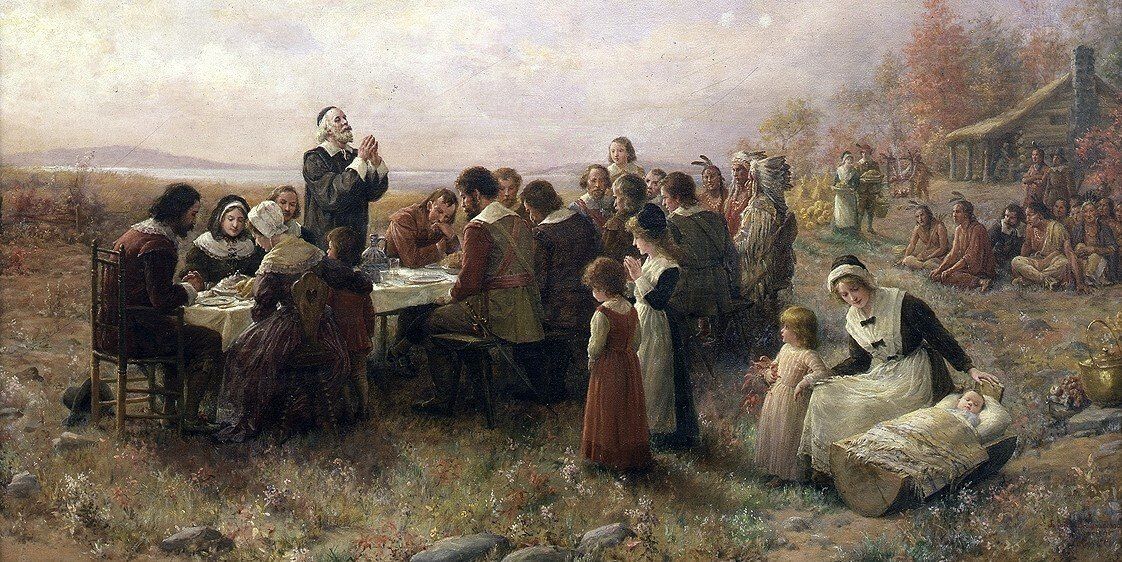As many saw corruption not only in the abuse of parishioners, but also in church authority and doctrine, many started to speak out for reform. Martin Luther published his 95 Theses in 1517, and thanks to Johannes Guttenberg’s printing press, was able to print many short treatises on Biblical matters. His publications are thought to amount to ⅕ of all works printed in Germany in the first third of the 1500s. Economic historian Dr. Jared Rubin published in 2014 that “the mere presence of a printing press prior to 1500 increased the probability that a city would become Protestant in 1530 by 52.1 percentage points.”
1
Over in England, King Henry VIII desired to annul his marriage to his first of 6 wives, Catherine of Aragon. Pope Clement VII wouldn’t grant it, so King Henry established the Church of England, with him as the Supreme Head. After his and his son Edward’s deaths, his daughter from Catherine named Mary was able to take over. She reinstated the Catholic faith, although she was quite vengeful, burning at the stake more than 280 dissenters in her 5-year reign, giving her the label “Bloody Mary.” During this time, many Reformers fled to Geneva where they published in 1560 the Geneva Bible.
After Mary’s death, her half-sister Elizabeth became queen and restored the Church of England. After her nearly 45-year reign, her cousin James I became king upon her death. He would commence the 1604 revision of the
Book of Common Prayer and the Authorized Version of the Bible, published in 1611, known today as the King James Bible.
Understandably, with all this political activity, things may not have always been on the up and up in the Church of England. Consequently, there were many reform efforts that sprung up, such as the Anabaptists, Baptists, Barrowists, Behmenists, Brownists, Diggers, Enthusiasts, Familists, Fifth Monarchists, Grindletonians, Levellers, Muggletonians, Puritans, Philadelphians, Quakers, Ranters, Sabbatarians, Seekers, and Socinians, to name a few.
Robert Browne was an Anglican priest who was influenced by some Puritan theologians. He eventually rejected the idea of purifying the Church of England, and helped start a separatist church in 1581. In 1592, the Seditious Sectaries Act was passed specifically outlawing Brownists and other separatists, including imprisonment. Still, more continued to be influenced. So, in 1604, Archbishop Bancroft launched his campaign of suspending or firing some 380 Puritan and Separatist ministers, many of whom started new separatist churches, such as ministers Richard Clyfton and John Robinson in 1606. The postmaster and manager of the archbishop’s Manor House in Scrooby, William Brewster, had been impressed by Clyfton’s preaching and invited the separatists to meet in the house.
Brewster eventually resigned his position, being fined for his absences at the king’s church. As the congregation grew, one enthusiastic 16-year old William Bradford began attending. An orphan since age 7, he had heard Clyfton preach at age 12. Now he was a member of this house church that grew to some 50 members, making it difficult to avoid the authorities. Bradford wrote, “But after these things they could not long continue in any peaceable condition, but were hunted & persecuted on every side… For some were taken & clapt up in prison, others had their houses beset & watched night and day, & hardly escaped their hands; and the most were fain to fly & leave their houses & habitations, and the means of their livelihood.”2
And so they would. They made the decision to venture off into unfamiliar and unknown places in pursuit of religious freedom, that they might raise their families in the ways of the Lord. Because of their dedication to His Word, these pilgrims survived with His grace and numerous miraculous interventions, had special days of Thanksgiving unto Him, and helped lay the Biblical foundation upon which the United States would be built, an incalculable blessing we enjoy to this very day.
1 Rubin, Jared (2014). "Printing and Protestants: An Empirical Test of the Role of Printing in the Reformation".
Review of Economics and Statistics.
96 (2): 270–286.
2 Bradford, William.
Bradford’s History “Of Plimoth Plantation.”: from the original manuscript. Wright & Potter Printing Co., Boston, 1898: chapter 1, last paragraph, <https://www.gutenberg.org/files/24950/24950-h/24950-h.htm>.




